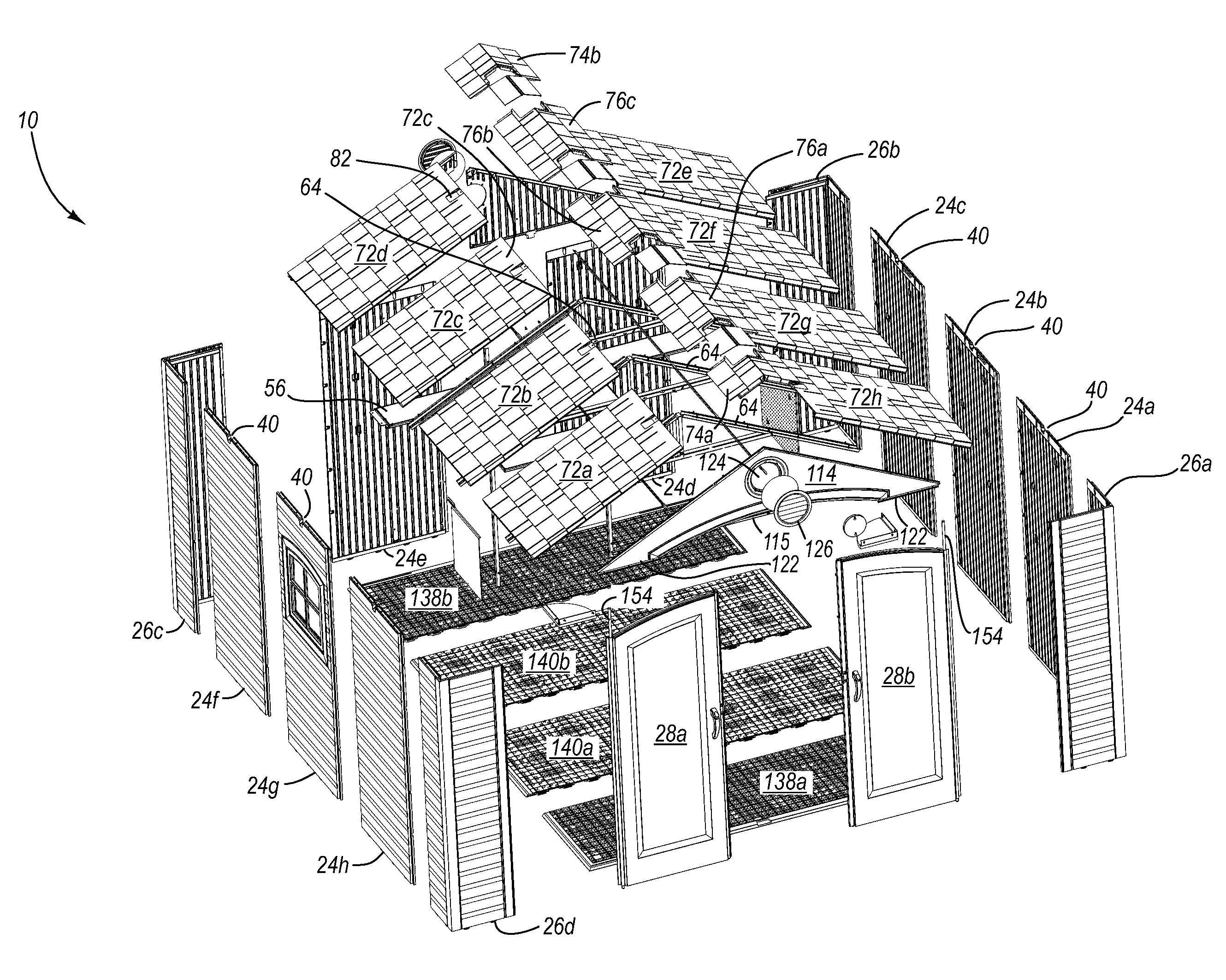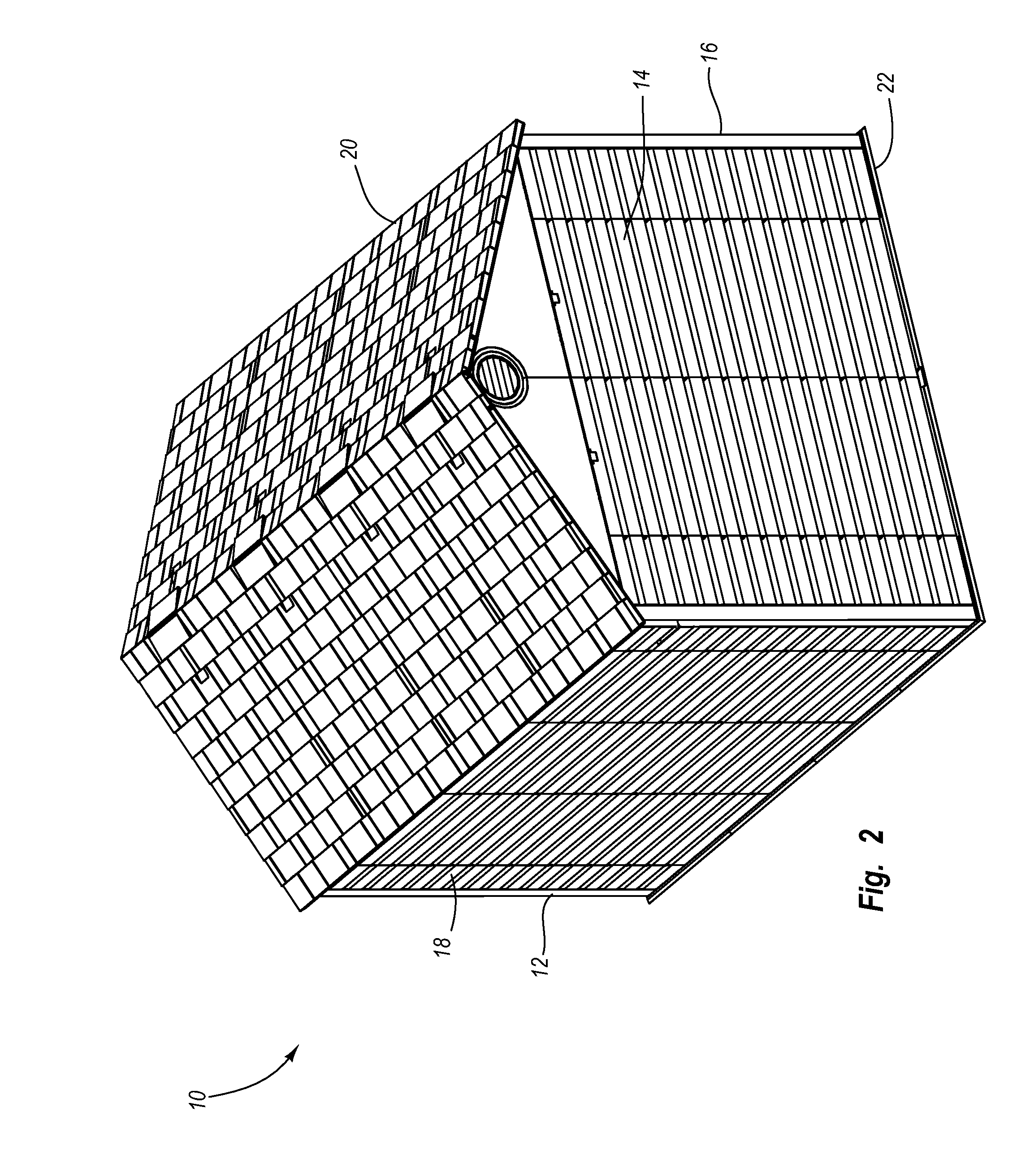Modular enclosure
a module and enclosure technology, applied in the field of enclosures, can solve the problems of difficult repair, modification, change or rearrangement of many conventional sheds, and a substantial amount of time, labor, and skill in building and construction of conventional sheds
- Summary
- Abstract
- Description
- Claims
- Application Information
AI Technical Summary
Benefits of technology
Problems solved by technology
Method used
Image
Examples
Embodiment Construction
[0101]Before describing preferred and other exemplary embodiments in greater detail, several introductory comments regarding the general applicability and scope of the invention may be helpful.
[0102]First, the following detailed description of preferred and other exemplary embodiments is generally directed towards an enclosure such as a storage enclosure. It will be appreciated that the storage enclosure may be used to temporarily and / or permanently store a variety of items, objects, devices and the like depending, for example, upon the intended use of the enclosure. The principles of the present invention, however, are not limited to storage enclosures. It will be understood that, in light of the present disclosure, the enclosures disclosed herein can have a variety of suitable shapes, arrangements, configurations and the like; and that the enclosures can be used for a variety of different functions, purposes and uses.
[0103]Second, the enclosures discussed in more detail below and ...
PUM
| Property | Measurement | Unit |
|---|---|---|
| width | aaaaa | aaaaa |
| width | aaaaa | aaaaa |
| length | aaaaa | aaaaa |
Abstract
Description
Claims
Application Information
 Login to View More
Login to View More - R&D
- Intellectual Property
- Life Sciences
- Materials
- Tech Scout
- Unparalleled Data Quality
- Higher Quality Content
- 60% Fewer Hallucinations
Browse by: Latest US Patents, China's latest patents, Technical Efficacy Thesaurus, Application Domain, Technology Topic, Popular Technical Reports.
© 2025 PatSnap. All rights reserved.Legal|Privacy policy|Modern Slavery Act Transparency Statement|Sitemap|About US| Contact US: help@patsnap.com



